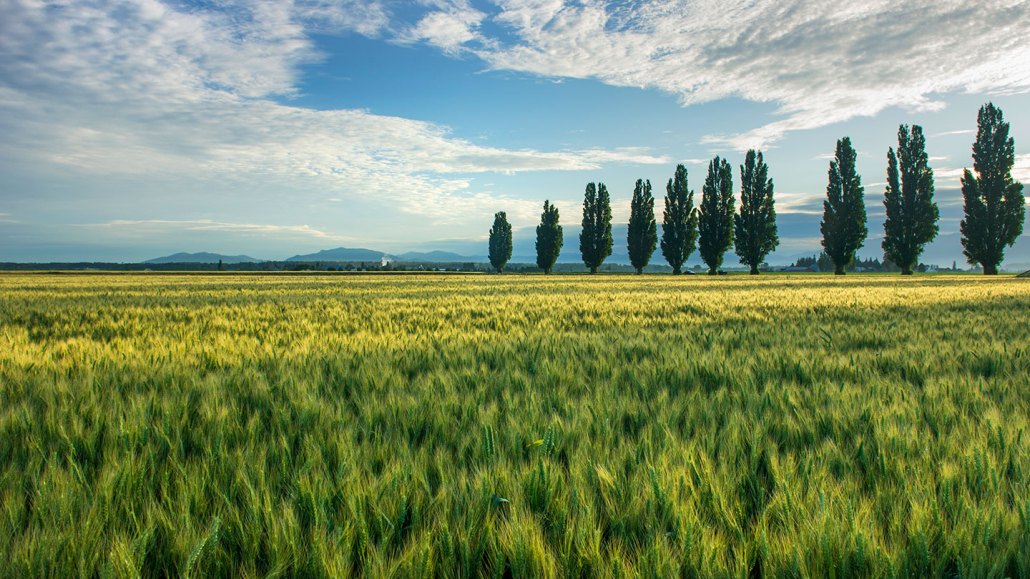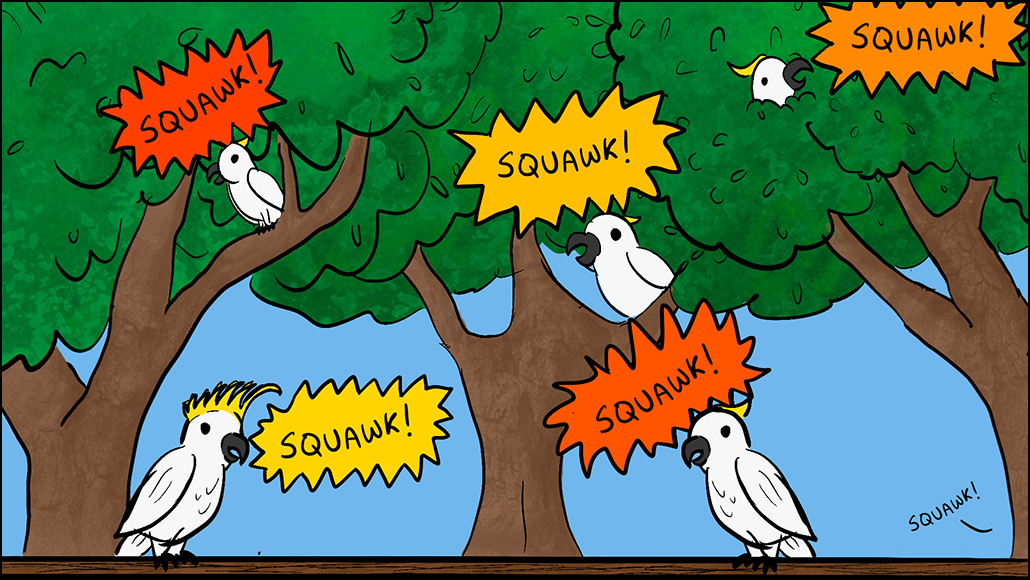Awards

Plants can communicate with one another, through underground fungal networks and through the air. Reporting on whether such events are evidence of "intelligence" won Avery Hurt a 2025 Kavli Science Journalism gold.
Alan Majchrowicz/Stone/Getty Images Plus
2025
- Are plants intelligent? It seems to depend on how you define it. This provocative piece points to emerging research that shows how plants communicate. They not only can learn things but also form memories. They even can recognize relatives. And they do such tasks — ones we typically associate with “thinking” — despite lacking a brain. For this reporting and storytelling in Science News Explores, Avery Elizabeth Hurt snagged a gold in the annual AAAS Kavli Science Journalism Awards (writing-for-children category). Since 2008, Explores writers have taken home five gold and four silver awards in this, the premier international science-writing competition.
2024
- On July 3, the Ohio chapter of the Society of Professional Journalists awarded Kathiann Kowalski second place (in the medical/science/health category) for a trio of stories she wrote in Science News Explores. One looks at the variety of ways hydrogen energy could power our world and help the climate. A second story offered advice for those 97 percent of U.S. teens that apparently go online daily (and one-third of whom admit they spend too much time on social media). In hopes of helping these kids manage the inherent risks of spending so much of their waking free time online, Kowalski pored through new research to create her Top 10 tips for how Gen Z’ers can get the best online experiences. The third story in this entry focused on new and better ways to stay cool in an ever-warming world. It was part of a year-long series in Science News Explores that identified new technologies and actions that can slow climate change, reduce its impacts or help communities cope with a rapidly changing planet.
2023
- Some of the best stories are those whose headlines make you go, Wait, but why? One example: “Some ecologists value parasites ― and now want a plan to save them.” Another is “For a better brick, just add poop.” Both stories unpack the scientific merits of seemingly wild ideas. And judges of this year’s international AAAS Kavli Science Journalism Awards announced on Nov. 9 that these stories swept top honors in its Children’s Science News category. Laura Allen claimed the Gold Award for her story on how poop can create more eco-friendly construction materials. Stephen Ornes took home the Silver Award for his piece on the little-appreciated ecological value of parasites.
- Science News Explores picked up a couple of honors on Oct. 24 at the 2023 Eddie and Ozzie Awards. These awards recognize excellence in editorial design and content. The print edition of Science News Explores magazine won both the Ozzie for New Magazine Design and an honorable mention for Magazine Launch in the Eddies.
- In May, the Society of Professional Journalists’ awarded Kathiann Kowalski second place for Ohio’s Best Journalism in 2022. She won for best medical/science/health reporting in the digital media/freelance category. Her winning entries, which she wrote for Science News Explores: Prevention programs can help reduce teen dating violence (and a sidebar: Five tips to consider when dating goes wrong); How we choose to pay has hidden costs for the planet (and a sidebar: ‘Mining’ cryptocurrencies pollutes the real world); and ‘Forever’ chemicals show up in students’ school uniforms.
2022
- Science News Explores writers took home first place in writing for children in the 2022 international AAAS Kavli Science Journalism competition. Winners were announced November 10. Magazine editors Sarah Zielinski and Maria Temming authored a trio of Science News Explores stories — part of the magazine’s Wild Things series. Illustrator JoAnna Wendel portrayed the research in a cartoon format. One story described cockatoos who taught each other how to open garbage bins. Another explained the reason pandas can stand out in zoos but blend into their environment in the wild. The last showed goldfish that learned to drive a wheeled aquarium around a room. “These comics were a truly delightful way to bring science to life,” one judge noted. “The authors and illustrator explained the scientific process with a light touch, in a way that was both fun and hugely engaging for young people.” As the authors of these pieces noted, even topics that are fun “can sometimes be intimidating for kids . . . We thought comics would be the perfect way to hook a young audience and show them that science doesn’t have to be a slog.”

- Kathiann Kowalski won first place in the Best Ohio Journalism competition hosted by the Society of Professional Journalists’ Ohio chapters. She picked up the win for a trio of stories: Cool Jobs: Saliva offers a spitting image of our health, Too much sitting could hurt your mental health and Psychology shines light on the harm racism can do. Her work was ranked the best medical/science/healthcare reporting in the digital-media category. The judges described her work as “very nice” and “accessible science reporting.”
- Sarah Zielinski and JoAnna Wendel took first place for multimedia in the annual D.C. Science Writers Association’s Newsbrief Awards. As the group notes, “short pieces are the true workhorses of science communication,” yet often get overlooked in favor of honoring longer, more in-depth stories. Zielinski wrote and Wendel illustrated the comic-form piece: Cockatoos learn from each other how to open garbage bins. This peek into a cool example of wildlife teaching their peers about how to find a great meal “is top-tier science communication,” one judge wrote. “The format is engaging, innovative and does a wonderful job illustrating the process of scientific inquiry to inspire young minds to question the environment around them.”
- Sid Perkins took an honorable mention in the same contest for his Science News for Students piece Engineers surprised by the power of an elephant’s trunk. An engineer-turned-journalist, Sid described how the physiology of internal plumbing in a pachyderm’s trunk changes when it needs to move water.
2021
- Stephen Ornes took home the silver AAAS Kavli Science Journalism Award in the Children’s Science News category for Whales get a second life as deep-sea buffets. “This story really captures the imagination and builds out a lovely image of the weirdness of the sea floor,” observed Blythe Terell, one of the judges and supervising editor for Gimlet Media. Even the researchers were captivated by what they found on the seafloor, notes Stephen. Pointing to a video that accompanied his story, he notes: “You can hear the scientists marvel and gasp and react like kids on Christmas morning.” This is Stephen’s second Kavli win. In 2015, he took home a gold award in this category. A long-time Science News for Students writer, Stephen’s whales piece was his 599th story for us.
2020
- Kathiann Kowalski won second place for best medical/science story in the digital media category from the Ohio Chapter of the Society of Professional Journalists for her story, Vaccines help everyone — even the unvaccinated.
2019
- Sharon Oosthoek won the silver AAAS Kavli Science Journalism Award for Children’s Science News for her story, Rare-plant hunters race against time to save at-risk species. Notes Sharon: “When rare plant hunter Steve Perlman told me losing a species is a lot like losing a friend, I felt the emotional tug of his job. I knew then I wanted to write a piece that conveyed to our young readers not only the sound scientific reasons for protecting rare plants, but also the humanity that drives this work.”
- Bethany Brookshire got an honorable mention from the Best Shortform Science Writing Project (April-June) for her piece: Is the Netflix show 13 Reasons Why linked to suicide?
- Kathiann Kowalski got an honorable mention from the Best Shortform Science Writing Project (April-June) for her piece in our Climate Change Chronicle series: Workers won’t work as well in a very warm world.
2018
- Kathiann Kowalski won first place for best feature writing in the freelance digital media category from the Ohio Chapter of the Society of Professional Journalists for her story, Science works to save a salty world treasure. It covered her field reporting in Wieliczka, Poland, with researchers who are studying the threat that tourism poses to a 700-year-old salt mine and art gallery, one that the United Nations Educational, Scientific and Cultural Organization has listed as a World Heritage Site. The sprawling underground warren, which contains some 2,000 chambers and spans a vast 7 million cubic meters (265 million cubic feet), is full of statues and other artworks sculpted from salt.
- Kathiann also won second place in this competition for a medical/science story in the digital media category: Heartbeat can affect racial perception of threat. This story described provocative research findings that suggest the phase of a cop’s heartbeat can affect how threatening someone’s behavior appears — but only if the person being judged belongs to another race.
2016
- Roberta Kwok won the silver AAAS Kavli Science Journalism award for Children’s Science News for her story, The shocking electric eel. Kwok’s account “is not only a ripping good yarn, it is also a wonderful description of the process of science,” noted one judge, John Carey. “Her story makes science seem both fun and compelling—and something that children could aspire to do themselves.”
2015
- Stephen Ornes won the gold AAAS Kavli Science Journalism award for Children’s Science News for his story, Where will lightning strike? Starting with a harrowing story about hikers caught in a thunderstorm atop a mountain in California’s Sequoia National Park, Ornes describes what scientists have learned about the behavior of lightning and what they are still struggling to understand. Stephen says he loves to write about science for children “not only because of the subject matter and style but also because it makes me a better dad. I no longer linger at the playground when a storm moves in, and I can finally explain in straightforward terms why hanging out in a thunderstorm is a terrible idea.”
- Kathiann Kowalski won first place award from the Ohio Chapter of the Society of Professional Journalists for her story, Recycling the Dead. It explains how Mother Nature breaks down the bodies of organisms, large and small. By extracting the building blocks of those once-living plants, animals, fungi and more, nature keeps our planet from being overrun by wastes. Instead, the dead get turned into food for the living.
2008
- Douglas Fox won first place in the AAAS Science Journalism Award for Children’s Science News for his story, Where rivers run uphill. Said one of the contest judges, Arndt Reuning of Deutschlandradio, Fox covered “an important issue in a vivid and funny way. He’s a superb and entertaining story-teller.” Explained Doug himself: Perhaps the biggest challenge in writing for a young audience “was remembering to be awestruck by the basic things that we tend to take for granted — like the simple fact that glaciers can evaporate. More and more I think that this is also good advice for communicating science to adults.”